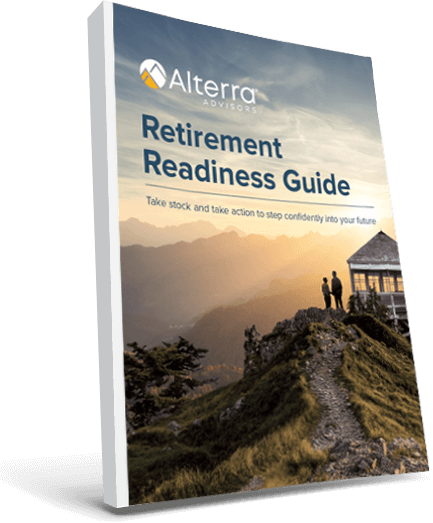THE QUARTER IN BRIEF
The S&P 500 certainly rollercoastered during the second quarter of 2019, but it also gained 3.8% across those three months. U.S.-China trade negotiations unwound, but as the quarter ended, they showed signs of resuming. The Federal Reserve grew dovish. Yields on longer-term Treasury notes dipped and so did mortgage rates. Consumers were confident, and consumer spending stayed strong. Mixed data emerged from the housing sector. Gold outperformed oil as well as many other commodities. The Brexit was delayed, and central banks in other countries elected to lower benchmark interest rates.
DOMESTIC ECONOMIC HEALTH
On May 5, President Trump announced that U.S. tariffs of 10% on $200 billion of Chinese products would rise to 25% and that virtually all other imports coming to the U.S. from China would “shortly” face tariffs. China retaliated, declaring that it would hike tariffs already imposed on $60 billion worth of American products effective June 1. The trade talks between officials from the world’s two largest economies then hit a six-week standstill. On June 29, however, President Trump announced at the Group of 20 summit in Japan that formal bilateral trade negotiations would soon resume and that the U.S. would hold off on tariffs slated for another $300 billion in Chinese goods.
The other big story of the quarter was the change of outlook at the Federal Reserve. The central bank did not adjust rates up or down during Q2, but its June policy statement noted that Fed officials would “act as appropriate” to try and sustain economic growth. The latest dot-plot, gathering opinions from Fed officials on where interest rates might be in the near future, showed nothing like consensus.
The quarter ended with most futures traders believing that the Fed would make some kind of rate adjustment as soon as July. Perhaps the Fed was also revising its expectations in light of declining inflation. The May Consumer Price Index showed just a 1.7% annualized advance. Back in May 2018, inflation was running at a yearly pace of 2.8%.
Some other indicators pointed to a soft patch in the economy in the spring, perhaps nothing more. The Department of Labor reported 205,000 net new jobs in April, but only 90,000 net new jobs in May; unemployment did remain at 3.6% in both months, with the U-6 jobless rate, including the underemployed, actually descending from 7.3% to 7.1%. The prime gauge of U.S. manufacturing health – the Institute for Supply Management Purchasing Managers Index – dropped notably to 52.8 in April, then declined to a 12-month low of 52.1 in May.
Even so, consumer spending remained solid. Personal spending improved 0.5% in May, building on the 0.3% April gain. Retail sales, coincidentally, were also up 0.5% in May and 0.3% in April. Personal incomes rose 0.5% in both months. A lagging indicator worth noting: as the quarter ended, the Bureau of Economic Analysis affirmed that the economy grew 3.1% during Q1.
Key consumer confidence indexes stayed at high levels. The Conference Board’s consumer confidence index was at 129.2 in April, then at 134.1 in May and 121.5 in June. The University of Michigan’s consumer sentiment index hit an 8-month peak of 100.0 in May and ended the quarter at 98.2.
GLOBAL ECONOMIC HEALTH
The Fed was not the only central bank reconsidering monetary policy during Q2. Policymakers in Australia, Chile, India, New Zealand, and Russia all cut interest rates after May 1 in an effort to stimulate their respective economies. Globally speaking, that constituted the most easing seen since the first half of 2016. Markets in Europe benefited from comments by Mario Draghi, President of the European Central Bank. Draghi said that he was prepared to loosen monetary reins in order to stimulate lethargic European Union country economies.
The Brexit was delayed. After an acrimonious spring in Parliament that saw no progress toward ratifying a new trade pact between the United Kingdom and the European Union, the E.U. postponed the Brexit deadline until October 31. Prime Minister Theresa May announced that she would resign, and based on election results, either current U.K. foreign secretary Jeremy Hunt or prior U.K. foreign secretary Boris Johnson will replace her later this month. Johnson, widely considered the favorite, has told the media that while he does not want the U.K. to leave the E.U. without a deal, the U.K. would do well to prepare “confidently and seriously” for that possibility.
WORLD MARKETS
Gains were numerous in the quarter, with Argentina’s Merval recording the largest at 26.02%. There was one other double-digit Q2 advance: Russia’s Micex added 10.97%. Germany’s DAX improved by 8.58%; Brazil’s Bovespa rose 6.97%. Other gains of note: France’s CAC 40, 4.58%; the Euro Stoxx 50, 3.64%; the MSCI World, 3.35%; India’s Sensex, 3.04%; Canada’s TSX Composite, 1.74%; Japan’s Nikkei 225, 1.42%.
The quarterly retreats included the 0.31% loss for the MSCI Emerging Markets benchmark, the 0.34% retreat for Spain’s IBEX, and the 0.61% decline of China’s Shanghai Composite.
COMMODITIES MARKETS
Examining second-quarter commodities performance, palladium had the best quarter among the metals, rising 18.23%. Wheat finished first among the key crops, up 12.22%. Ethanol topped the energy futures, advancing 8.74%. Coffee rose 12.06%; corn, 9.51%; gold, 8.63%. Gold ended Q2 at a price of $1,412.50 on the New York Mercantile Exchange. RBOB gasoline added 4.56% of value in Q2, and silver rose 1.25% to a NYMEX value of $15.27 on June 28.
There were also copious losses in the quarter. Some were minor: soybeans declined 0.36%; the U.S. Dollar Index, 0.61%; platinum, 0.98%; West Texas Intermediate crude, 2.16%. WTI crude settled at $58.20 per barrel on June 28 after a 9.07% June surge. Copper fell 6.06%; cotton, 17.86%; natural gas, 18.70%.
REAL ESTATE
Home loans grew cheaper in Q2, and home buying picked up as the quarter drew to a close. The National Association of Realtors noted a 2.5% increase for existing home sales in May; although, the annualized sales pace was still 1.1% beneath year-ago levels. May was the fifteenth straight month showing a year-over-year decline. (April had seen a retreat of 0.4 %.) New home sales, which make up only about 10% of the U.S. residential real estate market, were down 3.7% in April and another 7.8% in May. The S&P CoreLogic Case-Shiller 20-City Composite Home Price NSA Index, a lagging indicator, showed a 2.5% yearly gain as of April.
Not that long ago (November), the average interest rate for a 30-year, fixed-rate mortgage was near 5%. Contrast that with where it was as the second quarter ended: 3.73%, according to mortgage reseller Freddie Mac’s June 27 Primary Mortgage Market Survey. Back on March 28, Freddie Mac calculated the average interest rate on a 30-year FRM at 4.06%. As for 15- year, fixed-rate mortgages, their average interest rate went from 3.57% to 3.16% between the March 28 and June 27 surveys.
30-year and 15-year fixed-rate mortgages are conventional home loans generally featuring a limit of $484,350 ($726,525 in high-cost areas) that meet the lending requirements of Fannie Mae and Freddie Mac, but they are not mortgages guaranteed or insured by any government agency. Private mortgage insurance, or PMI, is required for any conventional loan with less than a 20% down payment.
The Census Bureau said that housing starts surged 6.8% in April, then retreated 0.9% a month later. The pace of permits issued for new residential construction improved by 0.2% in April and 0.3% in May.
LOOKING BACK, LOOKING FORWARD
Time for a look at stock index performance. The S&P 500 gained 3.93% in April, dropped 6.58% in May, and climbed 6.89% in June. It hit a new, all-time peak in intraday trading on June 21: 2,964.03. The benchmark closed the quarter at 2,941.76.
The Dow Jones Industrial Average settled at 26,599.96 on the last trading day of the quarter; the Nasdaq Composite, at 8,006.24. Early in June, the yield on the 10-year Treasury went under 2%, a development that occurred multiple times in that month.
All in all, it was quite a quarter, with stocks getting as much of a lift from Federal Reserve policy moves and White House tweets as from earnings. As Q3 starts, traders are wondering if a rate cut and a U.S.-China trade deal are in store for the summer; there is also some ambiguity about the economy’s momentum. Companies are expected to start reporting second- quarter earnings in mid-July.
CITATIONS:
1 – money.cnn.com/data/markets/sandp/ [6/28/19]
2 – piie.com/blogs/trade-investment-policy-watch/trump-trade-war-china-date-guide [5/31/19]
3 – bloomberg.com/news/articles/2019-06-29/xi-trump-agree-to-restart-trade-talks-china-says [6/29/19]
4 – bloomberg.com/news/articles/2019-06-19/fed-scraps-patient-rate-approach-in-prelude-to-potential-cut [6/19/19]
5 – ycharts.com/indicators/us_inflation_rate [6/27/19]
6 – investing.com/economic-calendar/ [6/28/19]
7 – instituteforsupplymanagement.org/ISMReport/MfgROB.cfm [6/3/19]
8 – marketwatch.com/tools/calendars/economic [6/28/19]
9 – investing.com/economic-calendar/cb-consumer-confidence-48 [6/27/19]
10 – tradingeconomics.com/united-states/consumer-confidence [6/30/19]
11 – global-rates.com/interest-rates/central-banks/central-banks.aspx [6/25/19]
12 – bloomberg.com/news/articles/2019-06-27/ecb-seen-cutting-rates-in-september-as-draghi-reloads-stimulus [6/27/19]
13 – bbc.com/news/uk-politics-48497953 [6/7/19]
14 – reuters.com/article/us-britain-eu-johnson/boris-johnson-says-he-is-serious-about-no-deal-brexit-threat- idUSKCN1TP2SR [6/24/19]
15 – tradingview.com/markets/indices/quotes-us/ [6/28/19]
16 – msci.com/end-of-day-data-search [6/28/19]
17 – barchart.com/futures/performance-leaders?viewName=chart&timeFrame=3m [6/28/19]
18 – money.cnn.com/data/commodities/ [6/28/19]
19 – tinyurl.com/y245hx5o [6/21/19]
20 – freddiemac.com/pmms/archive.html [6/27/19]
21 – cnbc.com/2019/06/21/it-was-a-monumental-week-for-markets-with-major-milestones-in-stocks-bonds-gold-and-oil.html [6/21/19]
22 – wsj.com/market-data [6/28/19]
23 – treasury.gov/resource-center/data-chart-center/interest-rates/Pages/TextView.aspx?data=yieldAll [6/28/19]
24 – tradingview.com/markets/indices/quotes-us/ [6/28/19]
25 – barchart.com/stocks/indices?viewName=performance [3/29/19]
The “Alterra” name was coined by joining the Latin roots “alter”, the origin of the word “altruism” with “terra” meaning earth or land. This name reflects the company philosophy of “clients before profits” and providing firmly grounded advice.

